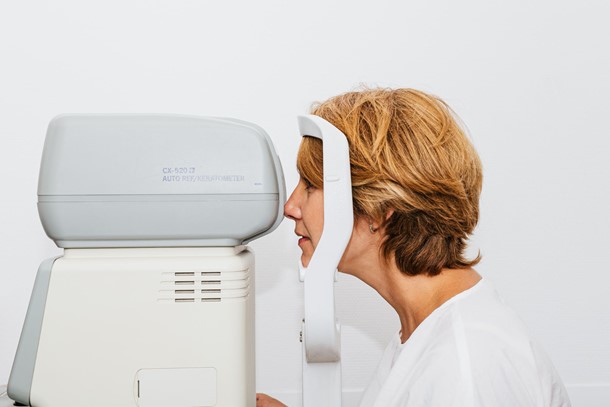Robotics in Oral and Eye Care

Robotics are having a moment far beyond the confines of science fiction. These powerful tools allow professionals to work more efficiently than ever before, and the implications on the field of healthcare are great.
Robots are doing incredible work in medicine, making them some of the most important tools care providers can employ. But understanding the power and potential of these innovations requires evidence of how they are used. For oral and eye care, these technological advancements are seeing plenty of use cases, streamlining the effectiveness of everything from diagnostics to anesthesiology.
Here’s what you should know about robotics in oral and eye care.
Robotics in Oral Care
First, we’ll explore how robotics have been applied to oral care to improve the dental health of millions of patients. With robotics, all kinds of improvements are possible to traditional care processes. From oral surgery to dentist training, the variety of robotic procedures now possible save time and money while ensuring that patients have a good experience. In dental care, this is a game-changer.
Here are some of the roles that robots are filling in the dental field:
- Drilling, cleaning, and filling
- Surgical assistance
- Denture prosthesis
- Local anesthesia
- Patient stand-ins
Some of these roles might confuse you. After all, how can robots apply local anesthesia or stand-in for patients?
The truth is, robotics fill these roles all the time and do an exceptional job of it. For example, in applying anesthesia, robots tend to take on some of the duties of both nurse anesthetists and anesthesiologists. Like nurse anesthetists, they help to monitor and oversee patient comfort. Like anesthesiologists, they directly administer anesthesia.
However, robots complete these tasks much differently than human professionals would. Instead, nanobots placed on the gums make up a colloidal suspension that takes control over nerve impulses. The result is a fast-acting and easily reversible method of maintaining a pain-free, winning smile.
Then, there are the Simroid robots built to give dentists-in-training life-like experiences. These robots look and act like real patients, complete with reactions to pain and realistic facial expressions. By training with these robotics, new dentists can gain a more real-world sense of every procedure they practice.
With the help of robotics, the field of oral care is transforming. But it isn’t our mouths alone that stand to benefit from robotic assistance. Our eyes, too, can be improved with the help of machines.
Robotics in Eye Care
When it comes to performing surgery on an eyeball, surgeons have to deal with tissues that are thinner than a human hair. The slightest hand tremor can lead to complications. Facing such delicate operations, the potential of robotics in transforming eye care is enormous. Robotics can maintain a level of precision that no human is capable of, and the results have already proven to be transformative in optometric and surgical technologies.
In fact, robotics enable some of the most powerful vision-enhancing technologies today. Here are just a few you should know about:
- LASIK eye surgery
- Diagnostic evaluations
- Intraocular lens replacement
- Corneal cross-linking
- Minimally invasive glaucoma surgery
All these procedures can be improved with the help of robotics that keep surgeons informed and precise. For example, the OSCANN desk technology makes it possible to diagnose neurodegenerative diseases through eye-tracking. This is done through artificial intelligence evaluation of a series of images, comparing them against databases too vast for human comprehension. With tools like these, optometrists can play a greater preventative role in patient care.
Then, the robotic assistance available to eye surgeons transforms the effectiveness of treatments. The Preceyes Surgical System is one such tool enabling greater precision. This robotics platform has already been approved in Europe to perform all kinds of vitreoretinal procedures, with studies indicating that the robot is 10-times more precise than the human hand.
In the first human use of Preceyes, doctors managed fewer inadvertent retinal touches and correspondingly reduced retinal microtrauma. The implications of such a precise tool mean that fewer patients will suffer from any kind of accident during surgery.
In short, robotics offer limitless improvements to care procedures. With the power of AI to scan images and diagnose problems, we can catch health issues faster and prevent more expensive care. Then, the precision offered by surgical robotics means more lives saved.
A Future of Powerful Robotic Assistance
There are plenty of great reasons robotics are the future of healthcare. Care providers have seen the benefits and continue to explore ways to integrate them into all kinds of care procedures. Already, surgical robots like the DaVinci have performed millions of surgeries around the world. And as the potential of these AI-driven tools increases, so do the options for providing better care.
Oral and eye care have already been transformed by the power of robotics. It is only a matter of time before further innovations give us even more solutions to health issues that can occur in any part of our bodies. As technology advances, keep a close eye on the innovations made possible by robots. After all, they just might save your life.
Thanks for helping to keep our community civil!
This post is an advertisement, or vandalism. It is not useful or relevant to the current topic.
You flagged this as spam. Undo flag.Flag Post

